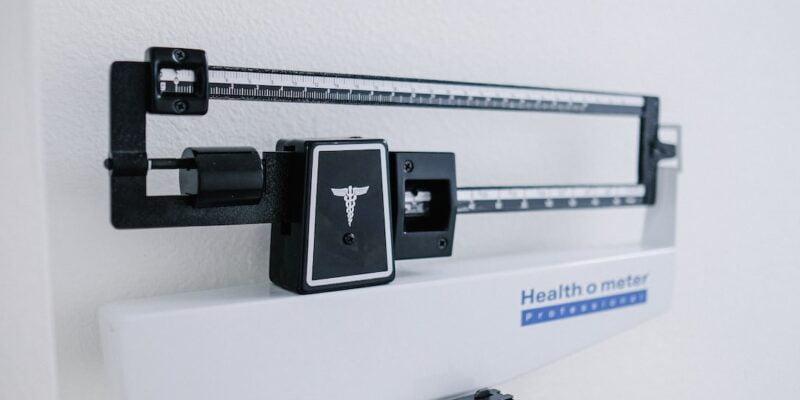
Managing Diabetes with the Keto Diet: A Comprehensive Guide
Diabetes is a chronic condition that affects millions of people worldwide. It occurs when the body is unable to properly regulate blood sugar levels, leading to high levels of glucose in the blood. Managing diabetes is crucial to prevent complications such as heart disease, kidney damage, and nerve damage. One way to manage diabetes is through diet, and the keto diet has gained popularity as an effective approach.
The Keto Diet, short for ketogenic diet, is a low-carbohydrate, high-fat diet that has been shown to help with weight loss and improve various health markers. It involves drastically reducing carbohydrate intake and replacing it with fat. This shift in macronutrient ratios puts the body into a state of ketosis, where it burns fat for fuel instead of glucose.
Managing diabetes through diet is essential because carbohydrates are the main macronutrient that affects blood sugar levels. By reducing carbohydrate intake on the keto diet, individuals with diabetes can better control their blood sugar levels and reduce their reliance on medication.
Key Takeaways
- The keto diet can be an effective tool for managing diabetes by reducing blood sugar levels and improving insulin sensitivity.
- Transitioning to the keto diet requires careful planning and monitoring of blood sugar levels, and may require adjustments to medication dosages.
- Meal planning on the keto diet for diabetes management should focus on low-carb, high-fat foods such as meats, fish, nuts, and non-starchy vegetables.
- It is important to monitor blood sugar levels regularly while on the keto diet, and to adjust medication dosages as needed.
- Incorporating regular exercise into a diabetes management plan can further improve blood sugar control and overall health when combined with the keto diet.
The Science Behind the Keto Diet and Diabetes Management
The keto diet works by reducing carbohydrate intake to a level where the body enters a state of ketosis. In this state, the body produces ketones from fat stores and uses them as an alternative fuel source instead of glucose. This shift in metabolism has several benefits for individuals with diabetes.
Firstly, the keto diet can improve blood sugar control by reducing the amount of glucose entering the bloodstream. Without a constant influx of carbohydrates, blood sugar levels remain more stable throughout the day. This can help individuals with diabetes reduce their reliance on insulin or other blood sugar-lowering medications.
Secondly, the keto diet can reduce insulin resistance, which is a hallmark of type 2 diabetes. Insulin resistance occurs when cells become less responsive to insulin’s effects, leading to elevated blood sugar levels. By reducing carbohydrate intake and promoting fat burning, the keto diet can improve insulin sensitivity and help the body use insulin more effectively.
Research studies have supported the use of the keto diet for diabetes management. A study published in the journal Nutrition & Metabolism found that individuals with type 2 diabetes who followed a low-carbohydrate ketogenic diet experienced significant improvements in blood sugar control and insulin sensitivity compared to those on a low-calorie diet. Another study published in the journal Diabetes Therapy found that a very low-carbohydrate ketogenic diet led to significant reductions in HbA1c levels (a marker of long-term blood sugar control) in individuals with type 2 diabetes.
Benefits of the Keto Diet for Diabetes Management
The keto diet offers several benefits for individuals with diabetes, including improved blood sugar control, reduced insulin resistance, weight loss, and a lowered risk of heart disease and other complications.
One of the primary benefits of the keto diet for diabetes management is improved blood sugar control. By reducing carbohydrate intake, individuals can better regulate their blood sugar levels and reduce the need for medication. This can lead to more stable energy levels throughout the day and reduce the risk of hypoglycemia (low blood sugar) or hyperglycemia (high blood sugar) episodes.
Reduced insulin resistance is another significant benefit of the keto diet for diabetes management. Insulin resistance is a key factor in the development and progression of type 2 diabetes. By following a low-carbohydrate, high-fat diet, individuals can improve their insulin sensitivity and reduce their reliance on exogenous insulin or other blood sugar-lowering medications.
Weight loss and improved body composition are additional benefits of the keto diet for individuals with diabetes. Excess weight is a risk factor for developing type 2 diabetes, and losing weight can help improve blood sugar control and overall health. The keto diet promotes weight loss by reducing carbohydrate intake and promoting fat burning. This can lead to significant reductions in body weight, body fat percentage, and waist circumference.
Lowered risk of heart disease and other complications is another advantage of the keto diet for diabetes management. Diabetes is a risk factor for heart disease, and individuals with diabetes are more likely to develop cardiovascular complications. The keto diet can help reduce the risk of heart disease by promoting weight loss, improving blood sugar control, and reducing inflammation in the body.
Getting Started: How to Transition to the Keto Diet
| Metrics | Values |
|---|---|
| Number of carbs allowed per day | 20-50 grams |
| Number of meals per day | 2-3 meals |
| Percentage of calories from fat | 70-75% |
| Percentage of calories from protein | 20-25% |
| Percentage of calories from carbs | 5-10% |
| Duration of transition period | 2-4 weeks |
| Common side effects during transition | Headache, fatigue, irritability, constipation |
| Recommended foods | Meat, fish, eggs, low-carb vegetables, nuts and seeds, healthy fats |
| Foods to avoid | Sugar, grains, processed foods, high-carb fruits, starchy vegetables |
| Benefits of the keto diet | Weight loss, improved blood sugar control, increased energy, reduced inflammation |
Before starting the keto diet, it is essential to consult with a healthcare professional, especially if you have diabetes. They can provide guidance and monitor your progress to ensure that the diet is safe and effective for you.
To transition to the keto diet, there are several steps you can take:
1. Educate yourself: Learn about the principles of the keto diet and how it can benefit individuals with diabetes. Understand the macronutrient ratios and food choices that are allowed on the diet.
2. Set goals: Determine your specific goals for following the keto diet. Whether it’s improving blood sugar control, losing weight, or reducing medication reliance, having clear goals can help keep you motivated.
3. Clean out your pantry: Remove any high-carbohydrate foods from your pantry to avoid temptation. Stock up on keto-friendly foods such as healthy fats, low-carbohydrate vegetables, and protein sources.
4. Plan your meals: Create a meal plan that includes a variety of keto-friendly foods. This will help you stay on track and ensure that you are getting all the necessary nutrients.
5. Start gradually: Instead of completely eliminating carbohydrates from your diet overnight, gradually reduce your carbohydrate intake over a few weeks. This will help minimize side effects and make the transition easier.
6. Monitor your progress: Keep track of your blood sugar levels, weight, and other health markers to assess how the keto diet is affecting your diabetes management.
During the transition to the keto diet, it is common to experience side effects such as fatigue, headaches, and irritability. These symptoms, known as the “keto flu,” are temporary and usually subside within a few days to a week. To manage these side effects, make sure to stay hydrated, consume enough electrolytes, and get plenty of rest.
Meal Planning for the Keto Diet and Diabetes Management
Meal planning is crucial for diabetes management, and it becomes even more important when following the keto diet. Planning your meals in advance can help ensure that you are getting all the necessary nutrients while keeping your carbohydrate intake low.
When meal planning for the keto diet and diabetes management, it is essential to focus on whole, unprocessed foods that are low in carbohydrates and high in healthy fats. Some examples of keto-friendly foods include:
– Fatty fish such as salmon and mackerel
– Avocados
– Nuts and seeds
– Olive oil and coconut oil
– Low-carbohydrate vegetables such as leafy greens, broccoli, and cauliflower
– Grass-fed meats and poultry
– Full-fat dairy products such as cheese and yogurt
Sample meal plans for the keto diet and diabetes management could include:
Breakfast: Scrambled eggs cooked in coconut oil with spinach and feta cheese.
Lunch: Grilled chicken breast with a side of mixed greens, avocado, and olive oil dressing.
Dinner: Baked salmon with roasted Brussels sprouts and cauliflower rice.
Snacks: Almonds or macadamia nuts, celery sticks with almond butter.
When meal prepping for the keto diet, it is helpful to plan your meals for the week in advance. This will save you time and ensure that you have healthy options readily available. Make a grocery list based on your meal plan and stick to it when shopping to avoid impulse purchases.
Foods to Eat and Avoid on the Keto Diet for Diabetes Management

When following the keto diet for diabetes management, it is important to focus on foods that are low in carbohydrates and high in healthy fats. This will help keep your blood sugar levels stable and promote fat burning.
Foods to eat on the keto diet for diabetes management include:
– Fatty fish such as salmon, mackerel, and sardines
– Avocados
– Nuts and seeds
– Olive oil and coconut oil
– Low-carbohydrate vegetables such as leafy greens, broccoli, and cauliflower
– Grass-fed meats and poultry
– Full-fat dairy products such as cheese and yogurt
On the other hand, there are certain foods that should be avoided on the keto diet for diabetes management. These include:
– High-carbohydrate foods such as bread, pasta, rice, and potatoes
– Sugary foods and beverages such as soda, candy, and desserts
– Processed foods that contain added sugars or unhealthy fats
– Trans fats found in fried foods and processed snacks
Reading nutrition labels and tracking macros can be helpful when following the keto diet for diabetes management. Look for foods that are low in carbohydrates and high in healthy fats. Pay attention to serving sizes to ensure that you are not consuming too many carbohydrates.
Monitoring Blood Sugar Levels on the Keto Diet
Monitoring blood sugar levels is crucial when managing diabetes, regardless of the diet you follow. However, it becomes even more important when following the keto diet due to its potential impact on blood sugar levels.
The keto diet can affect blood sugar levels in several ways. Firstly, by reducing carbohydrate intake, it can lead to lower blood sugar levels overall. This can be beneficial for individuals with diabetes who struggle with high blood sugar levels.
However, it is important to monitor blood sugar levels regularly to ensure that they do not drop too low. Hypoglycemia (low blood sugar) can occur if blood sugar levels drop too much, especially if you are taking medication to lower blood sugar. Symptoms of hypoglycemia include dizziness, confusion, sweating, and shakiness. If you experience these symptoms, it is important to consume a source of carbohydrates to raise your blood sugar levels.
Tips for monitoring blood sugar levels on the keto diet include:
– Test your blood sugar levels regularly using a glucose meter.
– Keep a record of your blood sugar readings to track patterns and identify any potential issues.
– Consult with a healthcare professional to determine the target range for your blood sugar levels.
– Adjust your medication dosage as needed based on your blood sugar readings and in consultation with your healthcare professional.
Incorporating Exercise into Your Diabetes Management Plan with the Keto Diet
Exercise is an essential component of diabetes management, and it can be particularly beneficial when combined with the keto diet. Regular physical activity can help improve insulin sensitivity, promote weight loss, and reduce the risk of complications associated with diabetes.
When incorporating exercise into your diabetes management plan with the keto diet, it is important to start slowly and gradually increase the intensity and duration of your workouts. This will help prevent injuries and allow your body to adapt to the changes.
Types of exercise that can be beneficial for individuals with diabetes include:
– Aerobic exercises such as walking, jogging, swimming, or cycling
– Strength training exercises using weights or resistance bands
– Flexibility exercises such as yoga or stretching
It is important to consult with a healthcare professional before starting an exercise program, especially if you have diabetes. They can provide guidance on the types and intensity of exercises that are safe for you.
Common Challenges and Solutions for Managing Diabetes with the Keto Diet
Managing diabetes with the keto diet can come with its own set of challenges. It is important to be aware of these challenges and have strategies in place to overcome them.
One common challenge faced when managing diabetes with the keto diet is the initial adjustment period. The transition to a low-carbohydrate, high-fat diet can be challenging, both physically and mentally. It is common to experience side effects such as fatigue, headaches, and irritability during this time. To overcome these challenges, make sure to stay hydrated, consume enough electrolytes, and get plenty of rest. Gradually reducing carbohydrate intake over a few weeks can also help minimize side effects.
Another challenge is the need for careful meal planning and tracking of macronutrients. Following the keto diet requires careful attention to food choices and portion sizes to ensure that you are staying within your carbohydrate limits. This can be time-consuming and require extra effort. However, there are several tools and apps available that can help simplify the process of tracking macronutrients and planning meals.
Seeking support from healthcare professionals is crucial when managing diabetes with the keto diet. They can provide guidance, monitor your progress, and make adjustments to your medication or treatment plan as needed. It is important to communicate openly with your healthcare team and keep them informed about any changes in your diet or lifestyle.
Success Stories and Final Thoughts on Managing Diabetes with the Keto Diet
There are numerous success stories of individuals who have successfully managed their diabetes with the keto diet. These individuals have experienced improvements in blood sugar control, reduced medication reliance, weight loss, and improved overall health.
However, it is important to note that the keto diet may not be suitable for everyone with diabetes. It is essential to consult with a healthcare professional before starting any new diet or making significant changes to your current diet.
In conclusion, the keto diet can be an effective tool for managing diabetes when done under the guidance of a healthcare professional. It offers several benefits such as improved blood sugar control, reduced insulin resistance, weight loss, and a lowered risk of complications. By following a low-carbohydrate, high-fat diet, individuals with diabetes can better regulate their blood sugar levels and improve their overall health.
FAQs
What is the Keto Diet?
The Keto Diet is a low-carb, high-fat diet that aims to put the body in a state of ketosis, where it burns fat for energy instead of carbohydrates.
How does the Keto Diet affect diabetes?
The Keto Diet can help manage diabetes by reducing blood sugar levels and improving insulin sensitivity. It can also aid in weight loss, which is beneficial for those with type 2 diabetes.
Is the Keto Diet safe for people with diabetes?
The Keto Diet can be safe for people with diabetes, but it is important to consult with a healthcare professional before starting the diet. It may require adjustments to medication and monitoring of blood sugar levels.
What foods are allowed on the Keto Diet?
Foods allowed on the Keto Diet include meat, fish, eggs, dairy, nuts, seeds, low-carb vegetables, and healthy fats such as olive oil and avocado.
What foods should be avoided on the Keto Diet?
Foods to avoid on the Keto Diet include high-carb foods such as bread, pasta, rice, and sugary foods. Processed foods and trans fats should also be avoided.
Can the Keto Diet cure diabetes?
The Keto Diet cannot cure diabetes, but it can help manage the condition by reducing blood sugar levels and improving insulin sensitivity. It is important to continue monitoring blood sugar levels and taking medication as prescribed by a healthcare professional.


















